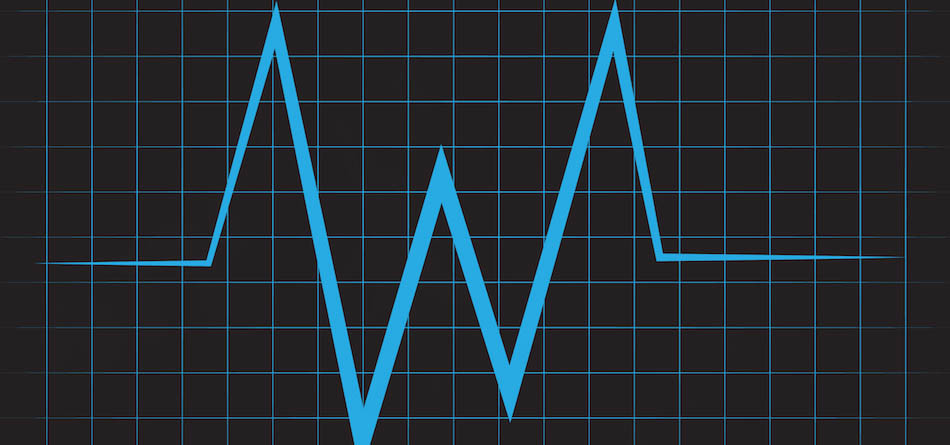Global stocks fell hard amid a flight to safety, but mechanisms that enable institutions to buy and sell generally did their jobs under the strain of heavy volume and volatility.
"Folks might not like the moves they are seeing, but on the equity side the market infrastructure is holding up well," said Brad Bailey, research director with Celent's capital markets group.
The Dow Jones Industrial Average was down about 1,700 in late afternoon amid heavy volume. extending a tumultuous stretch of more than a dozen trading days.
"I think everyone in market infrastructure areas -- exchanges, trading venues, etc. -- came into this week with a new mindset, and lots of testing, given trade counts and recent volumes," Bailey said. "We had been lulled, for the most part in recent years, into a sense of complacency on testing the limits of technology and systems, and how legacy, and new technologies will hold up under these types of strains. The Covid confusion has instantly changed an over decade-long conversation around trading vol."
This morning opened with a 7% drop, or about 1,800 off the Dow, that triggered a circuit breaker, resulting in a 15-minute, market-wide trading halt.
"Markets are getting pummeled but market infrastructure is performing as designed – a small bright spot on an otherwise rough morning," Kevin McPartland, head of market structure and technology research at Greenwich Associates, said earlier today in an email to Markets Media.
Trading stabilized post-halt, with the benchmark industrial index mostly trading within a few hundred points of its opening value. A NYSE spokesperson told Markets Media: "The market-wide circuit breaker triggered this morning operated exactly as designed, giving investors additional time to absorb information and understand what’s happening in the market.”
There were reports that hundreds of names on the New York Stock Exchange were slow to open, once the system-wide trading halt was lifted.
[embed]https://twitter.com/aosipovich/status/1237040848472285185[/embed]
It was unclear what effect the NYSE delay had on pricing of exchange-traded funds, though initial indications were that the impact was less than in a similar opening situation on August 24, 2015. The NYSE spokesperson declined comment on the reported opening delay.
Today's broad market drop continued several weeks of intense volatility, amid concerns about the economic impact of the coronavirus.
"It has been an extraordinary day," said Alasdair Haynes, CEO of London-based Aquis Exchange. "As a trader there have been very few days like it -- 1987, the (2008-2009) credit crisis, and this."
"It has been very impressive that, so far, the whole industry has been able to cope with the increase in volumes over a number of days," Haynes said. "The industry and people have been resilient."
https://twitter.com/_TimCave/status/1237048670442455041
A spokesperson for European exchange operator Deutsche Börse Group said: "It is a very busy trading day on Xetra and Eurex, but our markets are stable. Volatility interruption is the most important protective mechanism. During our volatility interruption trading is not suspended as it has been the case in the U.S. There is no automatically triggered suspension on Xetra, we slow down trading by switching from continuous trading to an auction."
Financial market participants remain wary of glitches that bedeviled market structure earlier in the 2010s, including the 'flash crash' of 2010, the Facebook IPO in 2012, and the software error at Knight Capital that same year. Exchanges, broker-dealers, and technology providers have worked to patch fault lines, and while executives say there will always be hiccups, the risk of a big outage is lower than years ago.
Some market participants and observers said this morning's trading halt in the U.S. wasn't necessary.
[embed]https://twitter.com/TripleDTrader/status/1237026071029207042?s=20[/embed]
Monday's market averted a second circuit breaker, which by rule would have kicked in if the S&P 500 drops by 13% for another 15-minute closure. A 20% decline would halt trading for the day.
There was a problem reported on the retail side, where upstart brokerage Robinhood had an outage, following similar issues last week.
In addition to equities, the foreign exchange markets also continued to function well despite the increase in volatility.
Foreign exchange
Curtis Pfeiffer, chief business officer at multi-asset quantitative trading technology provider Pragma, said in an email to Markets Media that, in times of extreme volatility, investors need the certainty of execution while having confidence they are still following best execution policies.

"It is in these conditions that execution algorithms continue to demonstrate their value. They allow traders to handle much more order flow, assess the market situation significantly faster than a human could, and identify the optimal execution strategy," he added. "Without execution algorithms, traders would not be as effective as they have been the past few weeks."
-With reporting by Shanny Basar














